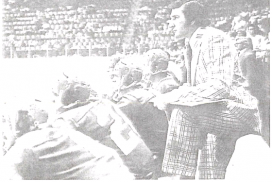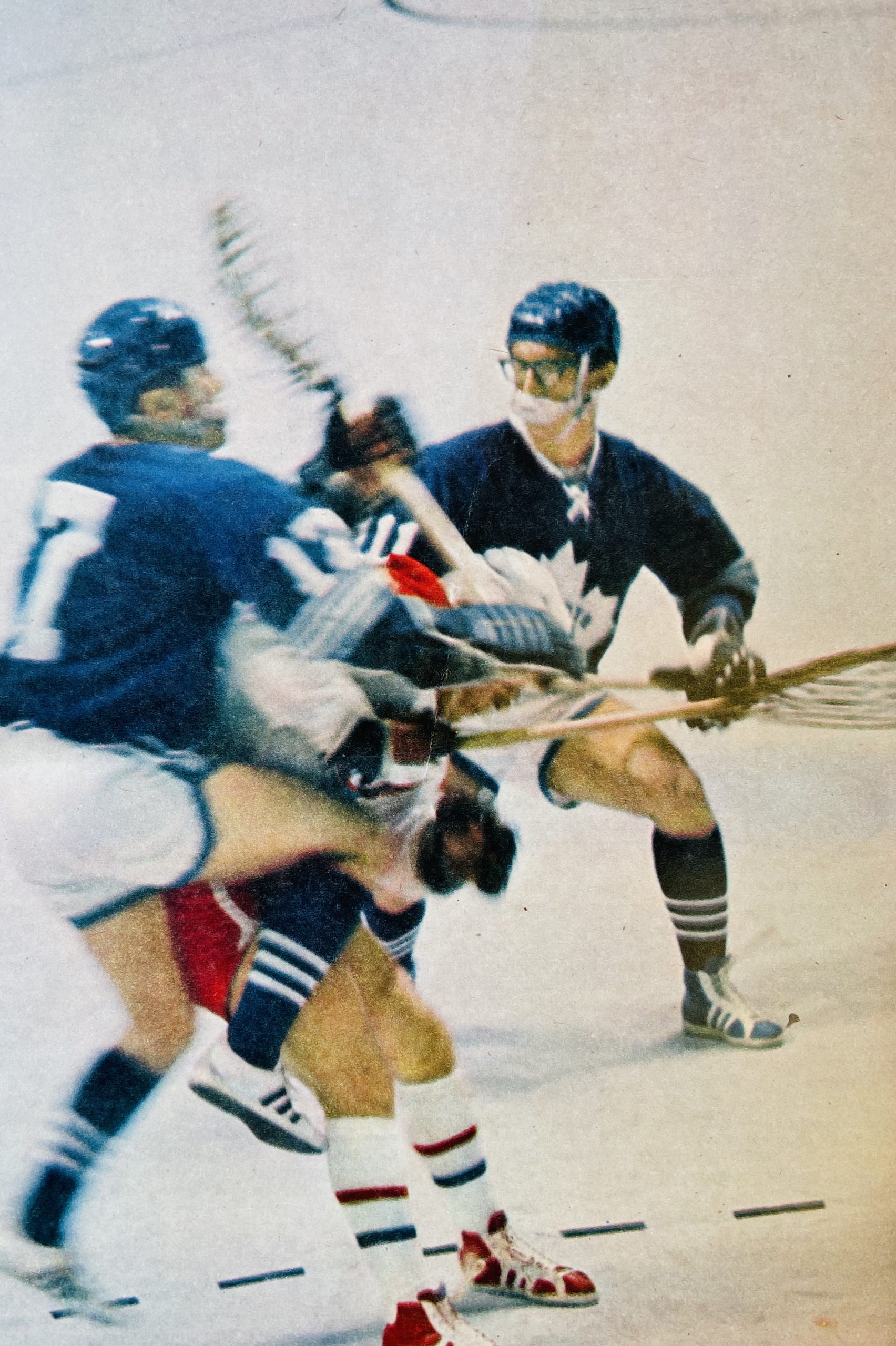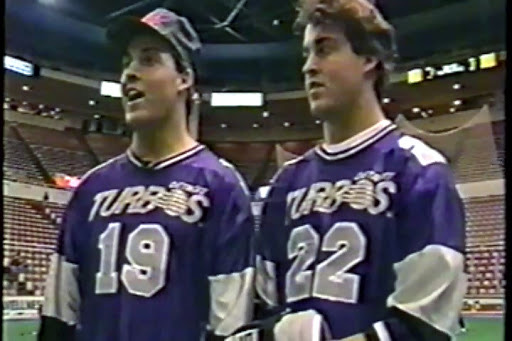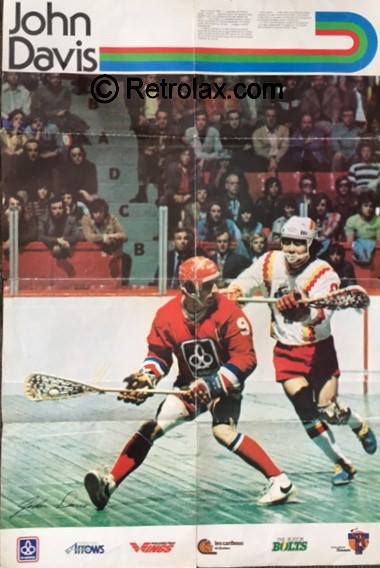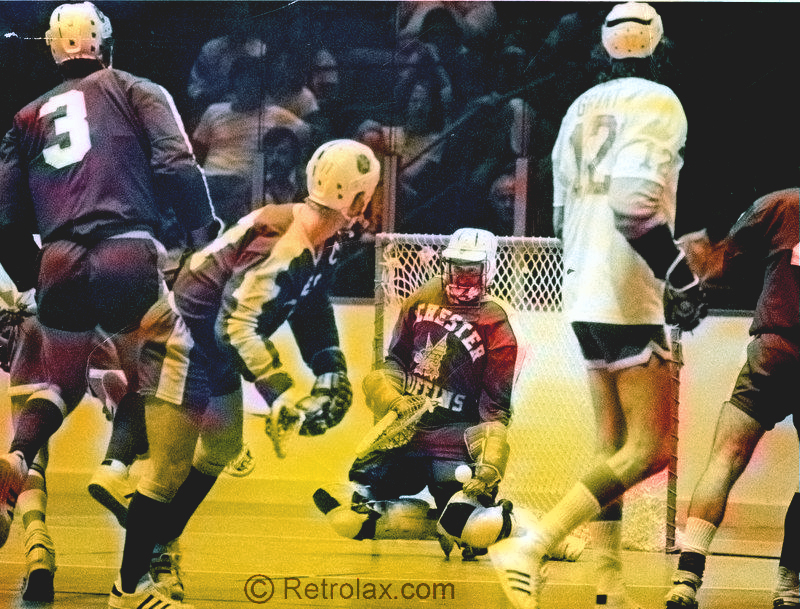By Eric Hutton
After years lurking in the boondocks, the “fastest, roughest team game in the world” is gambling its sock-it-to-’em fever can win big-city fans in a new professional international league
IT’S NEVER BEEN EASY to arouse much enthusiasm among sports fans for Canada’s official national game, lacrosse. For years it has been kept tenuously alive by a few stubborn small-town sponsors and some high-school coaches. So when a group of lacrosse aficionados proposed to Bruce Norris, president of the Detroit Red Wings of the National Hockey League, that he help sponsor the first professional, international, coast-to-coast lacrosse league (including use of Detroit’s prestigious Olympia stadium), Norris was understandably skeptical.
“Show me,” he said.
A game was arranged, and before it was over Norris had made up his mind. “Count me in,” he said. Now the Olympia is publicizing its new attraction as “summer hockey.” (Other members of the new National Lacrosse Association go along with this as a handy catchphrase, but a few die-hards grumble that it’s too complimentary to hockey, which they regard as a relatively tame version of lacrosse on ice.)
Norris’s co-operation has been a big help in the most determined attempt in the century to bring lacrosse back as a major sport, but others have done more. The real 1968 pioneer is Morley Kells, of the MacLaren Advertising Company, who first suggested formation of the new league. Kells, an unspectacular amateur lacrosse player in I960, organized the Toronto Maple Leafs three years ago as an amateur team; as manager, coach and part owner, he turned it professional this year as a founding club in the NLA (after doing a selling job on Stafford Smythe and Harold Ballard of the hockey Maple Leaf organization). Brian McFarlane, the TV sports announcer, is president of the Montreal Canadiens. Jim Bishop, manager and coach of Canada’s most successful amateur lacrosse team, the Oshawa (Ontario) Green Gaels, is taking a crack at professionalism as boss of the Detroit Olympics. Those cities, along with Peterborough, a small Ontario city that has remained a hotbed of lacrosse through the lean years, form the eastern section of the league.
In the western section the teams — Vancouver, Portland, Oregon, Victoria and New Westminster — are owned by partnerships or syndicates who happen to be lacrosse fans and who are fully aware that they stand a small chance of making a fortune — and a rather larger probability of losing their shirts.
But for a league that started early this summer with little fanfare, the owners of most of the teams have not been discouraged, especially as they’re charging fairly high prices — two to four dollars. Toronto, Detroit and Peterborough have been drawing 3,000 to 4,000 paid admissions, as have Victoria and Portland. Vancouver and New Westminster have attracted an average of only 1,500.
“But wait until Toronto and Detroit make their western swing,” says J. Thomas English, western commissioner of the NLA. “We’ll fill the stadiums, and after 15,000 people have seen a game we’ll be on our way.
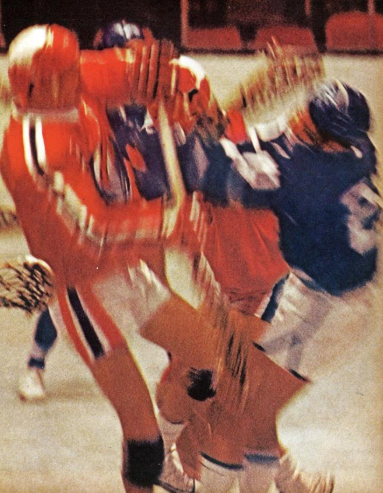
Players’ salaries arc modest by hockey standards — $3,000 to $4,000 a year — but with only 38 games to play each season, all the players can hold jobs without interfering with games or practices. “And,” adds Terence Vincent Kelly, QC. of Oshawa, president of the NLA, “our teams travel first class.”
Why did lacrosse, whose partisans persist in regarding it as “Canada’s national game,” never become really big-time? Lloyd Percival, the controversial fitness expert and himself a former lacrosse player who is consultant on fitness and training to the Toronto, Montreal and Detroit teams, maintains that it became a dull spectacle in recent years because too many players treated it as a casual pastime and didn’t keep in top condition.
“The result was that in the third period the players were so tired that they acted like a hound dog chasing a rabbit on a very hot day — both walking.”
Percival says that as a professional game determined to become a major sport, lacrosse coaches are stressing player conditioning as insistently as hockey coaches. He maintains that a lacrosse game between two well-conditioned teams is the fastest, most exciting, least interrupted and roughest team game in the world.
There are, in fact, more injuries in the average lacrosse game than in any other, but not of the broken-leg-and-fractured skull variety.
But after all, whacking and being whacked around in a uniform that provides little more protection than a soccer uniform, plus what appears to be a child’s helmet, is highly conducive to scrapes, contusions and bruises, especially when the playing surface is cement.
Modern rules have taken at least some of the mayhem out of lacrosse. (One theory is that the Indians did not invent it as a sport but as a convenient way of eliminating the weak and the unfit.) An English spectator at a game in 1765 reported:
“Everyone who might impede them is knocked down and trodden under foot without mercy; and before the game is decided it is a common thing to see numbers sprawling on the ground with wounded legs and broken heads.”
Lacrosse is going to have to create its own stars (NHL players, an obvious source of summer lacrosse talent, are extremely reluctant to get into the game, as are their employers, for the same reason: why risk injury for $3,500 when hockey pays up to 10 times that much?)
There are two genuine national stars, however: Gaylord Powless, Detroit’s ex-Oshawa Mohawk Indian, and Graeme Gair of the Toronto Maple Leafs, whom Coach Morley Kells describes as “the key to a lot of things.”
If lacrosse makes the international scene, stars to watch for are — for a rather localized game — rather more international than most. For example, the most valuable player of the Victoria Shamrocks is one Ranjit Dillon, an East Indian, whose brother Nirmal Dillon is also on the team. Alex Carey, one of half a dozen Indians in the league, is captain of the Portland team. Ivan Stewart of Portland is a Negro.
Lloyd Percival, who has been conducting tests for a score of years to compile a “sports power index,” which incorporates all the physical and psychological characteristics that combine to make up the ideal athlete, puts the well-conditioned player at the top of his athletic-efficiency list. Assuming that the perfectly conditioned athlete scores 10, lacrosse rates 8.5, and here are the others: decathlon, 8.0; football, 7.6; hockey 6.3; basketball 6.0.
“As for sheer speed,” says Percival, “a runner can beat a skater in equally good condition — up to 100 yards. And who travels as much as that at one time in either game?”
What should an uninitiated fan look for in a lacrosse game?
□ There are no offsides, eliminating the frequent stoppages of other team games. As another result, the long breakaway pass to a speeding player often brings the crowd to its feet.
□ There are few pile-ups that stop the action in corners and along the boards, as in hockey. (A bouncing ball is much more difficult to “freeze” than a flat puck.)
□ There are six active players, rather than five mobile men plus a goalkeeper. The lacrosse goalie is free to run up-court, even to score, and 30 assists by a goalie during a season isn’t unusual.
□ Lacrosse is a man-for-man game, with each opposite number trying to outwit his opponent to get the ball if it comes his way. (There’s no penalty for checking an opponent not in possession of the ball, as in hockey.)
“So,” says Percival, “what the spectator sees is all the skills of 10 decathlons being played right before his eyes. Except for one thing: the good lacrosse player is just a little better than the good decathlon performer. What other sport can claim that?”
(Macleans, August 1968)

